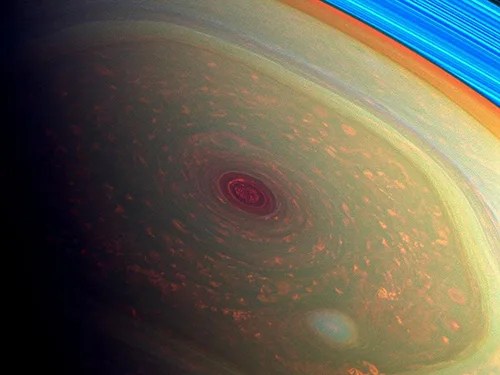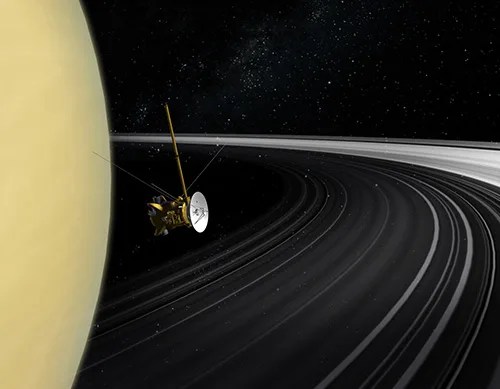4 min read

NASA's digital communications team will be honored at the 21st Annual Webby Awards on May 15 in New York. For the first time, NASA’s social media presence has been recognized by the Webby Awards, winning in corporate communications and being honored with the People's Voice Award.
NASA’s Cassini project was recognized with its second Webby for science websites. NASA.gov, the agency's primary website, received its ninth People's Voice Award in the Government & Civil Innovation category. The agency’s Jet Propulsion Laboratory social media team in Pasadena, California, was nominated in the Education & Discovery category, and the Cassini social media team was nominated for the Best Overall Social Presence category.
“First and foremost, a sincere ‘thank you’ to our NASA friends and fans for their support,” said NASA’s Associate Administrator for Communications Jen Rae Wang. "We value their interest and support of exploration and discovery. We're very happy to see NASA's digital communications efforts honored with Webby Awards. As our NASA fan community turn more to the web and social media for news, they will find NASA there for them."
Established in 1996 by the International Academy of Digital Arts and Sciences, the Webby Awards honor excellence on the internet, including websites, advertising and media, online film and video, mobile sites, apps and social media.
NASA's Office of Communications has managed NASA.gov, the agency's primary home on the web since 1994, setting a high standard for government online communications. The site won Webby awards in 2003, 2012 and 2014, and visitors to NASA.gov have voted it the winner of the People's Voice award eight times since 2002, most recently in 2016. The site receives an average of more than 300,000 visits a day, and surges with major announcements, such as the discovery of the first known system of seven Earth-size planets around a single star, which brought in 6.7 million visits in a week.
The Cassini mission site also has been honored in past years, with a nomination for best science website in 2005 and a win for best science website in 2009.
NASA's social media presence comprises more than 525 social media accounts on 18 platforms. Through this presence, NASA seeks to not just share new discoveries and stories about space exploration on social media, but to do so in a way that is understandable and engages the public to interact with our content. The agency's flagship Twitter account now has more than 22 million followers, the most of any federal government agency, and is in the top 100 overall accounts on the platform. NASA's flagship Instagram account has more than 20 million followers and is in the top 100 accounts on the platform, in addition to NASA being the largest federal government agency on Facebook and Google+. NASA maintains a robust presence sharing behind-the-scenes stories on Snapchat and curates highlights from around the agency on Tumblr, Pinterest and GIPHY. All told, NASA's social media presence reaches more than 130 million followers across all agency accounts. Thanks in large part to social media, more people are now connecting and engaging with NASA and learning about its missions.
To view all of NASA’s social media accounts, visit:
For more information about the Webby Awards, visit:
Stephanie Smith
Jet Propulsion Laboratory, Pasadena, Calif.
818-393-5464
stephanie.l.smith@jpl.nasa.gov
John Yembrick
Headquarters, Washington
202-358-1584
john.yembrick@nasa.gov
NASA’s Cassini spacecraft and ESA’s Huygens probe expanded our understanding of the kinds of worlds where life might exist and eight more reasons the mission changed the course of planetary exploration.
- April 22: Titan 126 Flyby at 6:08 a.m. UTC (11:08 p.m. PDT on April 21)
- April 23: First Grand Finale Orbit Begins at 3:46 a.m. UTC (8:46 p.m. PDT on April 22)
- April 26: First Ringplane Crossing at 9 a.m. UTC (2 a.m. PDT)
- May 24: Northern Summer Solstice Begins
- Sept. 15: Cassini's Final Entry into Saturn's Atmosphere begins at 10:44 a.m. UTC (3:44 a.m. PDT). Spacecraft loss of signal comes one minute later at 10:45 a.m. UTC (3:45 a.m. PDT).
- Sept. 15: Final signal received on Earth at 12:08 p.m. UTC (5:08 a.m. PDT)
A collection of graphics, documents, videos and other resources that showcase the Cassini mission's Grand Finale on Sept. 15, 2017.
What day will the mission end (September, 15, 2017)? Did we always plan to plunge into Saturn? What will Cassini's final moments be like? What will we see? Get answers to these questions and many more in our FAQ section.









